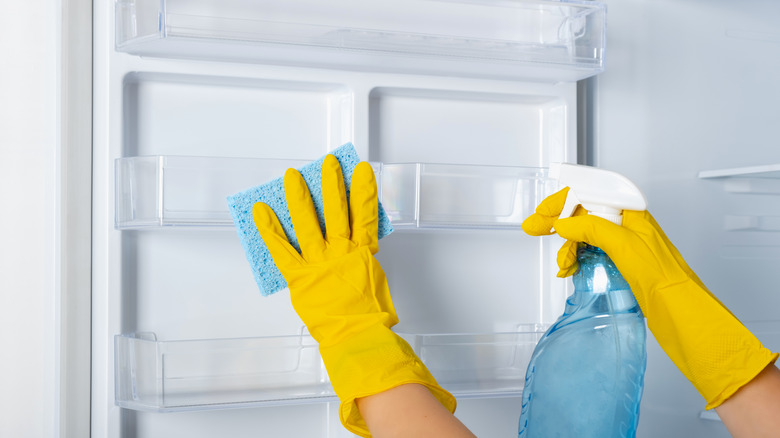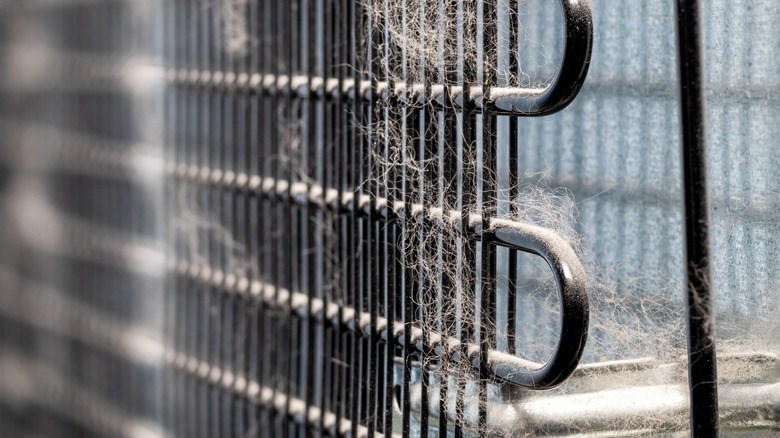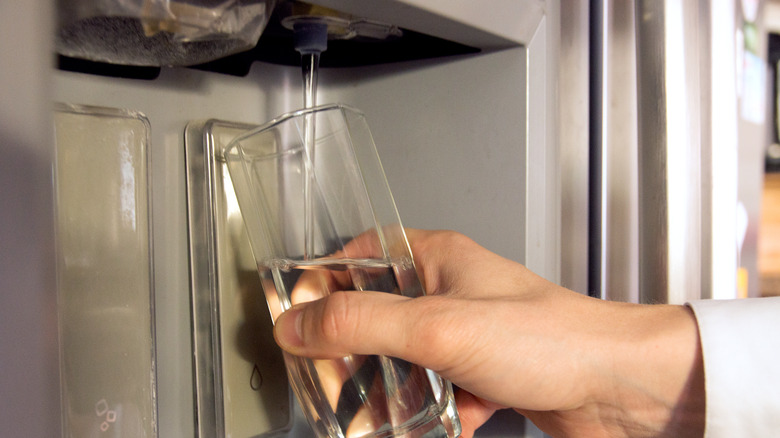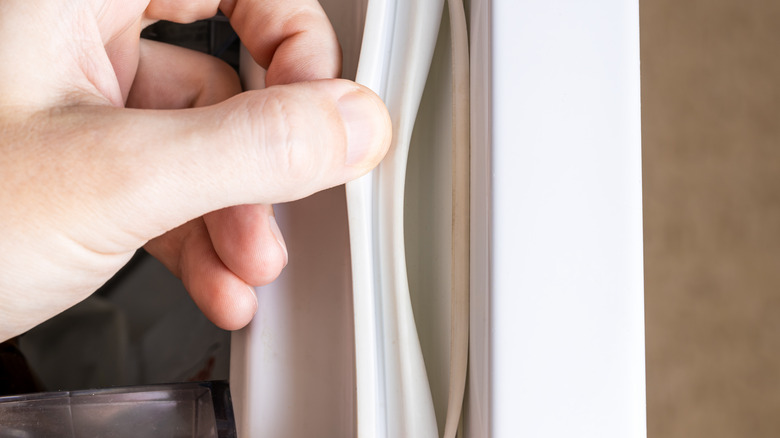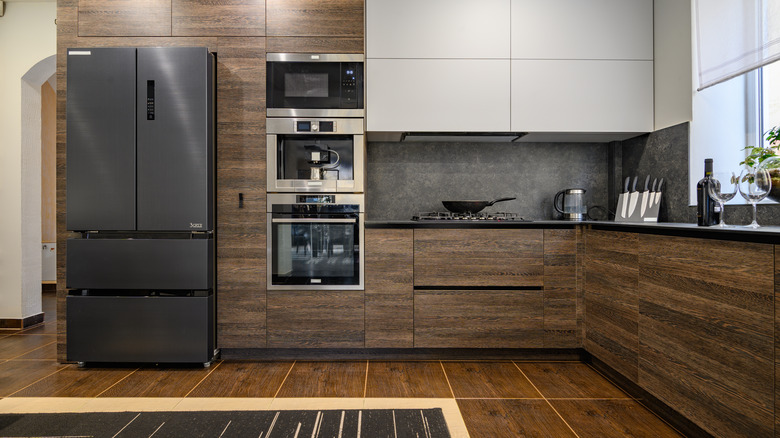Tips For Extending The Life Of Your Fridge
One of the most important appliances you have within your household is your refrigerator. The U.S. Department of Agriculture says that this appliance, besides keeping your food fresh and lasting for an extended period of time, also keeps it safe from bacteria and other harmful critters that could make us sick when consumed. This is why we must make time throughout our busy schedules to maintain it by keeping it clean, safe, and functioning properly for as long as possible.
Howards informs that the average fridge lasts between 10 and 20 years. Although this may seem like a long time, after knowing the thousands of dollars it costs to replace one, you may start hoping that the time frame was longer. Fortunately, there are a variety of tips you can use to help extend the life of your fridge, allowing it to function properly for a longer period. Let's take a closer look at some of these tips below.
Clean the interior regularly
Cleaning the interior portions of your fridge on a regular basis can not only extend the life of your appliance but can also benefit the health aspect of your life. According to Real Simple, you should thoroughly clean your fridge at least once every couple of months or whenever food has spoiled, something leaks, or when you feel it needs extra cleaning.
To properly clean the interior of your appliance, the U.S. Department of Health and Human Services recommends starting by removing any spoiled items from it and immediately throwing them away. Then, empty the fridge completely by temporarily putting the rest of your food products on your kitchen counter or in a cooler. Finally, get out all the removable parts, like the shelves and drawers.
After washing those parts in your kitchen sink with soap and hot water, mix either a solution of warm water and dish soap or bleach and water to clean out the rest of your fridge. Next, rinse and dry all parts of the appliance before reassembling it. Finally, wash your hands thoroughly before placing all your food items back inside your fridge.
Keep the coils clean
Along with cleaning the inside of your fridge, your appliance's condenser coils also need to be cleaned regularly. Johnny DIY recommends cleaning these coils at least once or twice every year for the best results.
To start, locate the plastic vent at the bottom of your fridge and unsnap it to reveal the floor underneath. Depending on when you last cleaned this area, chances are there will be a large build-up of dust and other kitchen debris, so use the extender of your vacuum cleaner to clear it out. When finished, snap the vent back into place and slowly move your fridge away from the wall to locate your condenser coils, which are stationed on the back side of the appliance.
Depending on your type of fridge, the coils can be located near the top or bottom. Once you have located them, use a screwdriver to remove the panel covering them, then use an old toothbrush and a can of compressed air to remove dust and debris from around and inside the coils. Finally, finish up by vacuuming everything, screwing the panel back over the coils, and moving the fridge back to its original position against the wall.
Change the water filter regularly
If your fridge provides you with clean water and ice, an important aspect of maintaining the appliance is changing its water filter on a regular basis. Although this is not a difficult do-it-yourself task, before starting, it is important to ensure that you have the right kind of filter for your particular refrigerator. Although most water filters work the same, not all fridges fit the same filter. To find out which type your appliance needs, look no further than the owner's manual for the correct information.
When it comes to replacing this filter, Home Depot states that the process highly depends on the type. Most fridges have twist-on or push-in water filters that are pretty self-explanatory, but some have this equipment installed at the bottom, which may be a bit more complicated to replace. The fridge's owner manual can easily walk you through the steps you need to take to properly tackle this task. Although most appliances give you some sort of signal when it's time to replace the filter, plan to change it at least once every six months to keep the water system clean and consistently to work properly.
Keep the gaskets clean
Another very important part of your fridge that you can not forget to maintain on a regular basis is the gaskets. According to TundraFMP, the gaskets are the rubber pieces that seal the doors of your appliance, keeping the cool air inside and all other outside air out. As important as these pieces are, however, they tend to attract a massive amount of kitchen grime that can quickly affect the way the whole apparatus functions.
While maintaining your fridge gaskets, American Home Shield recommends starting by checking each piece for damages that may require you to replace them, such as ruptures. Once you ensure that your gaskets are not damaged in any way, you can move on to cleaning them. Because these pieces consist of a tight fold that helps seal the door when a fridge is closed, cleansing them can be difficult and ineffective when using regular cleaning utensils. So instead, use a solution of vinegar and water and a q-tip. Dip the q-tip into the solution, and run it over the surface and through the creases. Then, quickly finish by drying the area and immediately putting the gasket back into use by closing the doors.
Keep the top of the fridge clear
Finally, to help your fridge function the best it can, Consumer Reports highly recommends not placing or storing anything directly on top of it. Although this may seem somewhat silly, there is logical reasoning behind it. A fridge is meant to dissipate heat, which keeps the food inside at a cool, regulated temperature. Although it may be the perfect space to store snacks, cereal boxes, or a variety of kitchen items, you need to keep the top and surrounding areas empty.
Keeping stuff on the top of this appliance prevents it from properly getting rid of the heat in order to function properly. But for the best results, ensure your fridge has a gap around all its edges. This includes the top, sides, and even the back of the fridge. Although some types of owner's manuals make specific spacing suggestions, a 1-inch gap is a fair amount of room.

